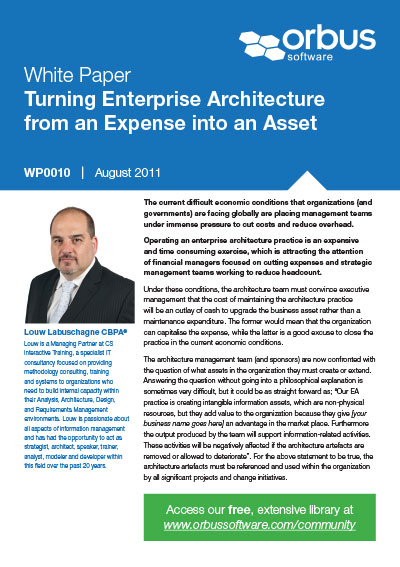Enterprise architecture projects: how to put mechanisms into place to ensure a high value return.
Enterprise architecture projects: how to put mechanisms into place to ensure a high value return.
The current difficult economic conditions that organizations (and governments) are facing globally are placing management teams under immense pressure to cut costs and reduce overhead. Operating an enterprise architecture practice is an expensive and time consuming exercise, which is attracting the attention of financial managers focused on cutting expenses and strategic management teams working to reduce headcount.
Under these conditions, the architecture team must convince executive management that the cost of maintaining the architecture practice will be an outlay of cash to upgrade the business asset rather than a maintenance expenditure. The former would mean that the organization can capitalise the expense, while the latter is a good excuse to close the practice in the current economic conditions.
The architecture management team (and sponsors) are now confronted with the question of what assets in the organization they must create or extend. Answering the question without going into a philosophical explanation is sometimes very difficult, but it could be as straight forward as; “Our EA practice is creating intangible information assets, which are non-physical resources, but they add value to the organization because they give [your business name goes here] an advantage in the market place. Furthermore the output produced by the team will support information-related activities. These activities will be negatively affected if the architecture artefacts are removed or allowed to deteriorate”. For the above statement to be true, the architecture artefacts must be referenced and used within the organization by all significant projects and change initiatives.
Please login to continue reading this ebook.
